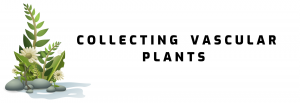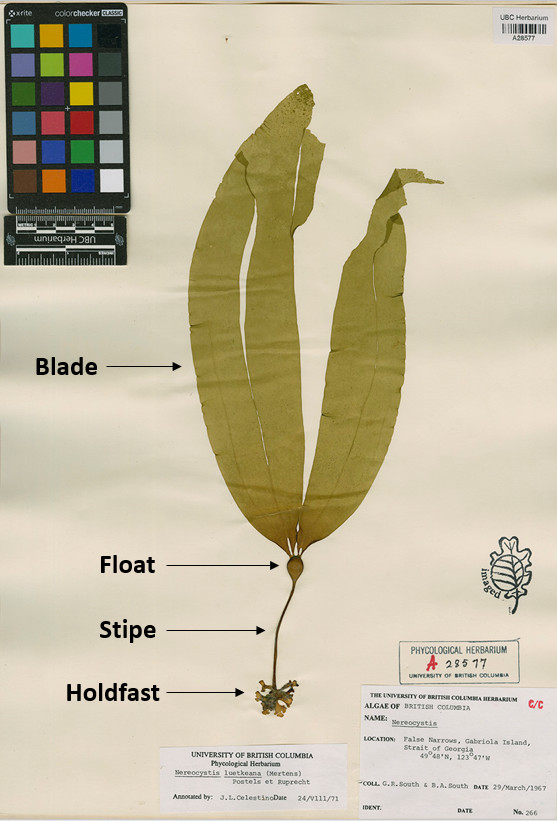
What to collect depends on the final purpose of your collection i.e. is the collection for personal use or to be deposited into a herbarium for research purposes? In addition, collection methods will differ depending on the type of organism being collected (i.e., plants, algae, bryophytes, lichens, and fungi). Always check if a permit/permission is needed before collecting. Whenever collecting, assess the abundance of the organism – if it is not relatively abundant do not collect.
General tips if the purpose of the collection is for herbarium deposit:
- Select representative individuals.
- Select individuals that show morphological variation .
- Collect the entire individual if possible.
- Collect features that are important for identification (see below for organism specifics); for example:
- Reproductive structures
- Vegetative structures
- Underground structures
- Date and location (including GPS coordinates if possible) of collection.
- Notes about collection site: Habitat characteristics, distance from disturbance/landmarks, number of individuals in population.

- Reproductive structures: flowers, buds, inflorescences, fruits, seeds, cones, sporangia. Individuals that display multiple reproductive stages (i.e. flowers and fruits) are ideal for collection.
- Vegetative structures: leaves (mature and juvenile), basal leaves, stems, branches, barks .
- Underground structures: roots, rhizomes, bulbs, corms, tubers .

Collecting algae is very similar to collecting plants, except algae have no ‘underground’ structures to collect. You also want to make sure to rinse your algae specimen with fresh water before you press it to remove most of the salt.
- Reproductive structures: many of algae’s reproductive phases are microscopic, but you can still capture a reproductive stage when you collect an algae with sori or a coralline algae with conceptacles .
Click here for an image of reproductive structures
- Vegetative structures: blade, stipe and holdfast mainly found in mainly the brown algae.


Many bryophytes and lichens can be picked gently from the substrate and placed in a paper bag. Each specimen should be packaged separately. For rock or concrete mosses a paint scraper comes in handy. If you don’t plan to identify your samples immediately, you should dry them.
Collecting Guidelines:
- Collect responsibly; never decimate a population.
- Collect shoots of bryophytes with sporophytes if they are present.
- Make sure to collect enough material to be able to identify the species (i.e., a few shoots) and deposit a specimen that will be useful for researchers.
- If the population is abundant, collect a small handful if larger specimens. For smaller specimens, small paper envelops can be used.
- If the population is not abundant, your collection should be relatively small.
- If the bryophyte is scarce or rare DO NOT collect it.


The part of a fungus to collect is generally the fruiting body – the structure that produces spores, such as mushrooms. When collecting, select fruiting bodies that are in good condition. If you can, collect a range of developmental stages from one location such as the same log or patch of soil. Do not combine specimens from different locations. If there are no mature fruiting bodies don’t bother collecting as spores are often used for identification. It is important that fungi are packaged so they do not get crushed. Fungus collectors often use paper bags or lightly wrap them in wax paper which are placed in a large basket or container.
